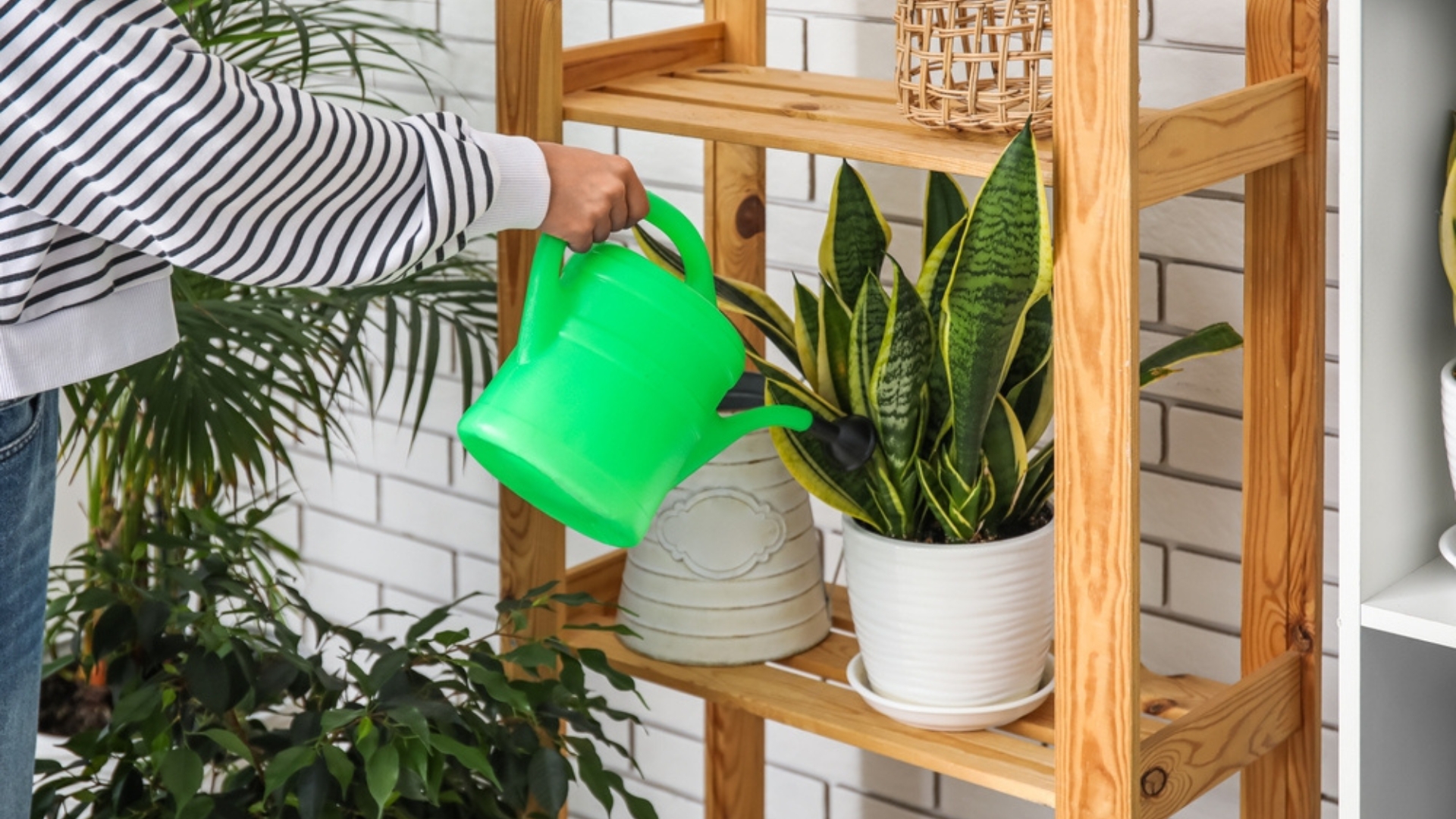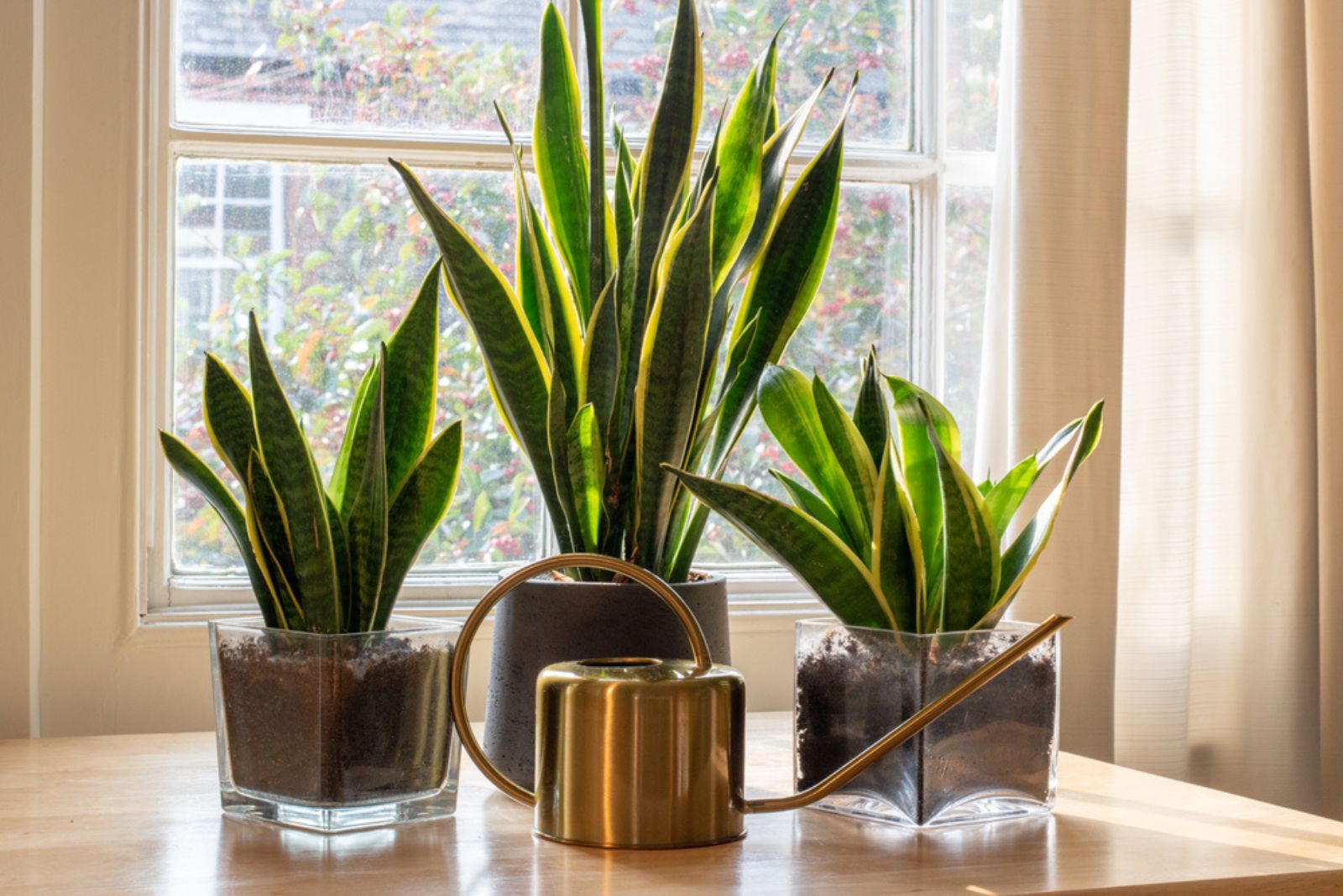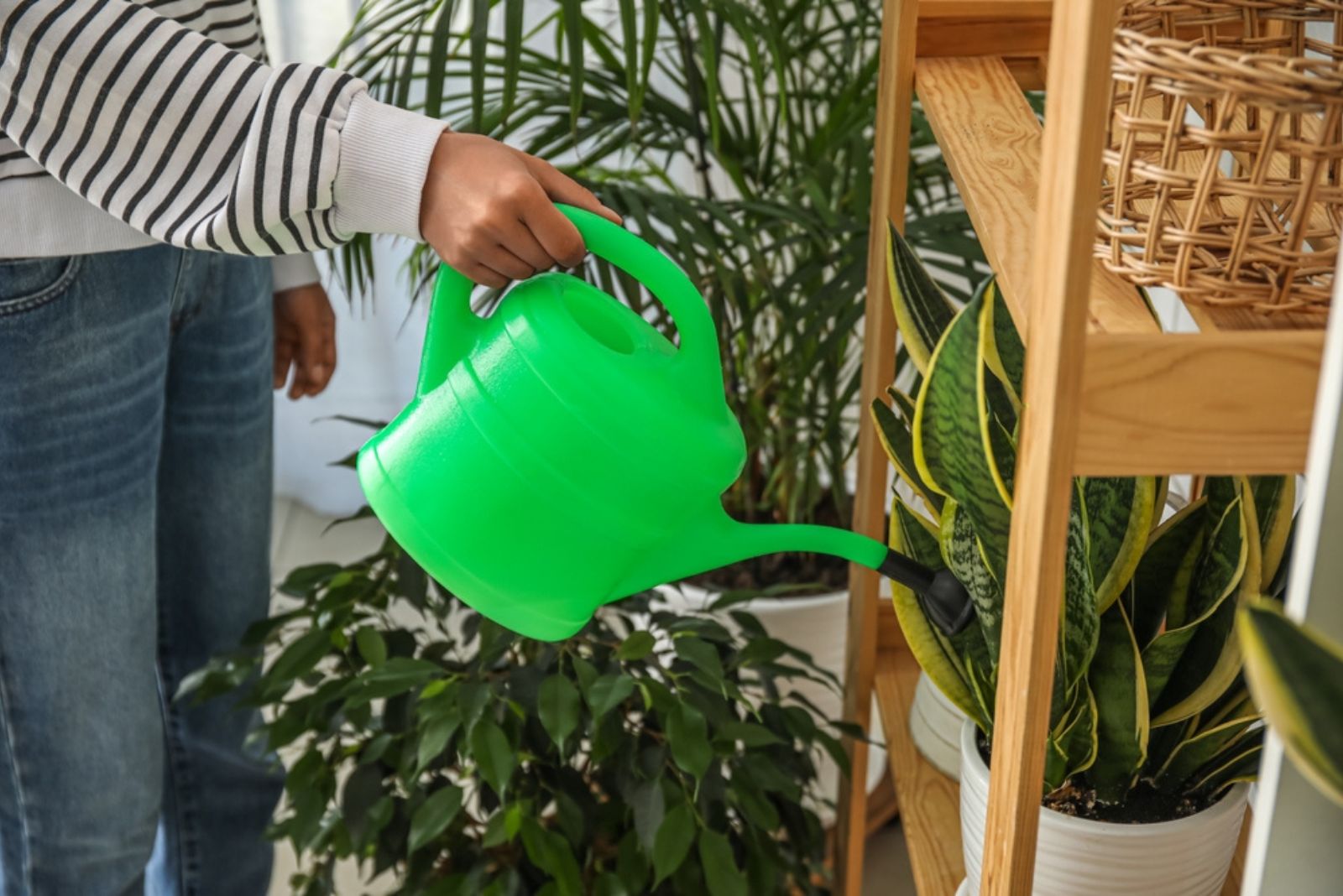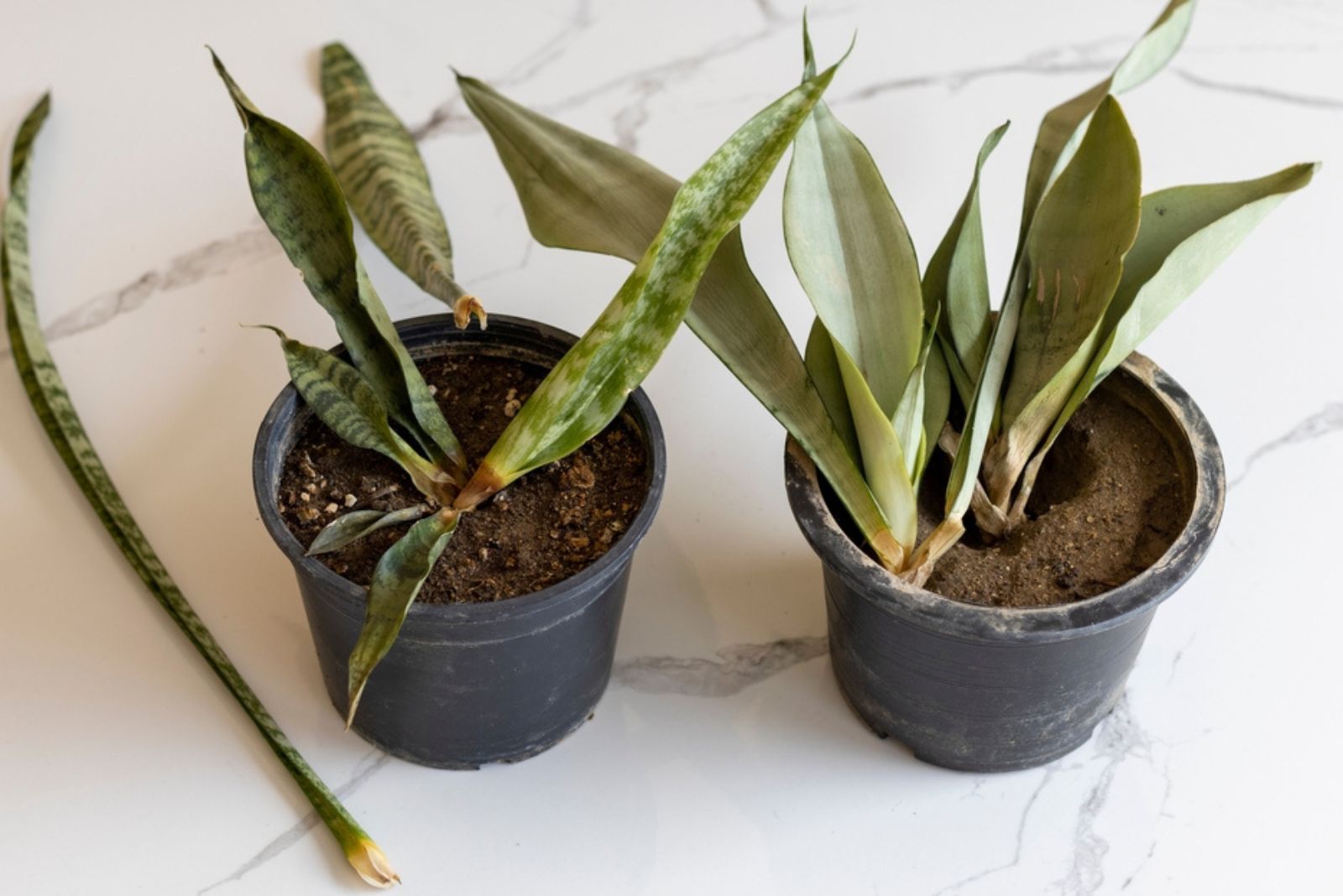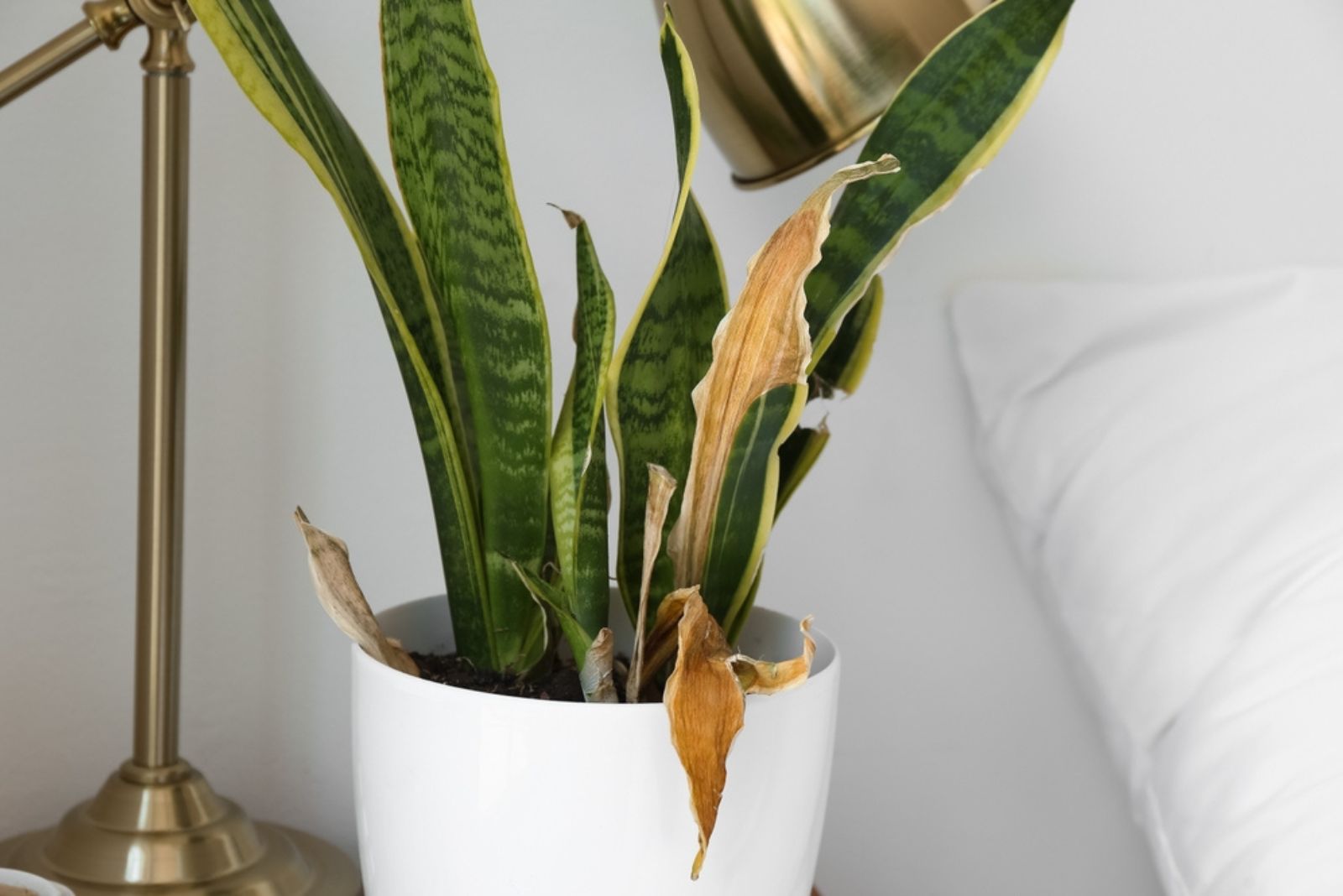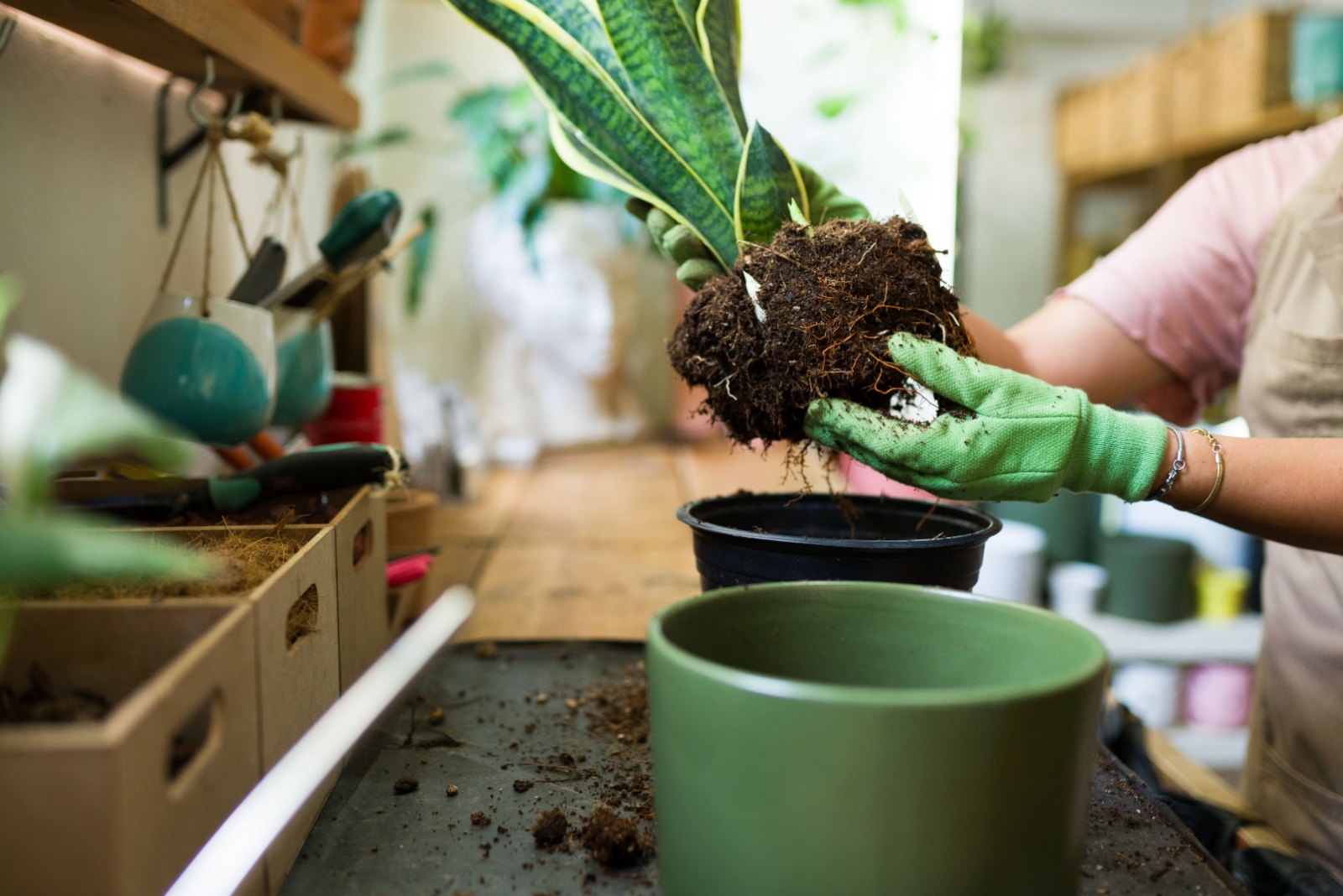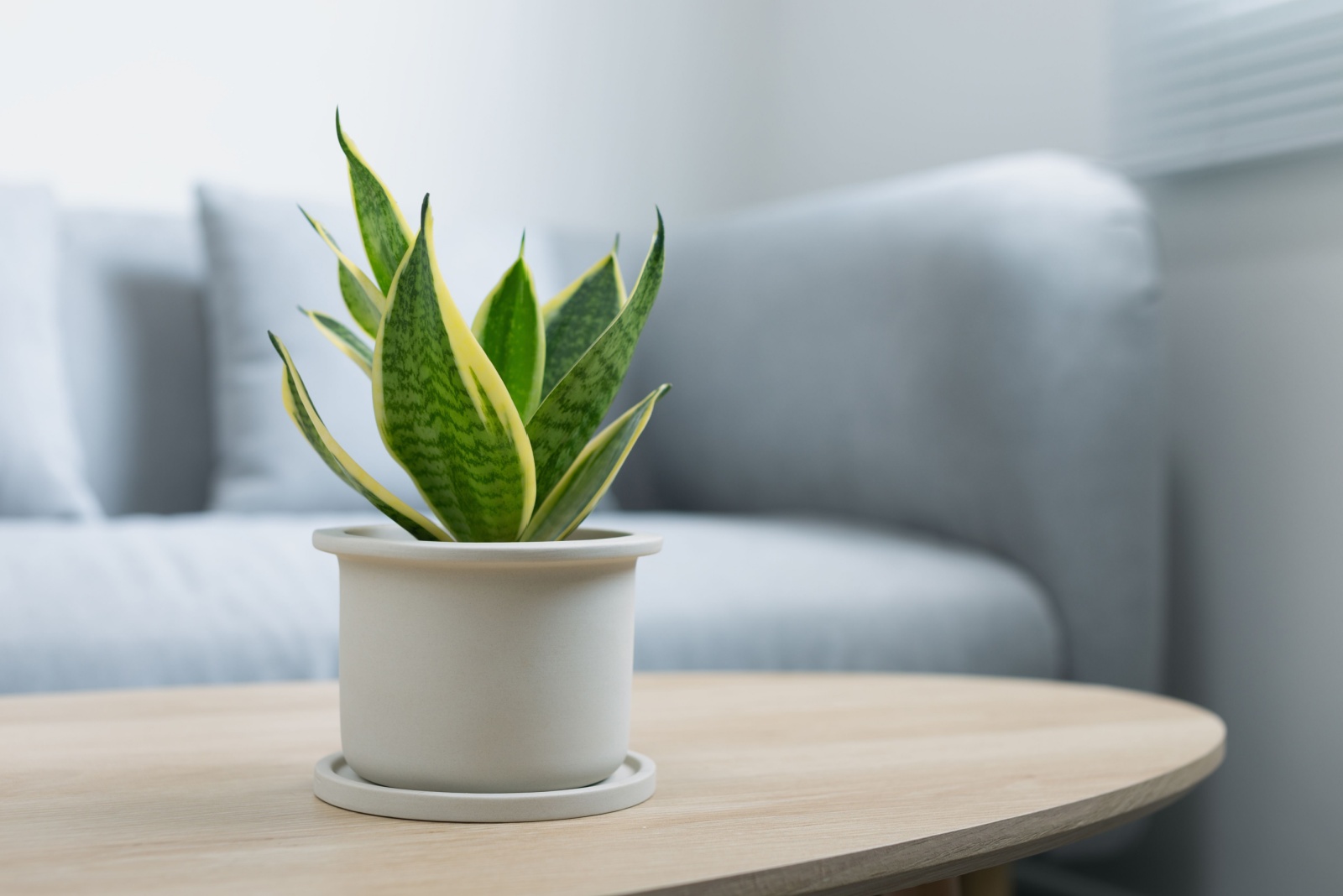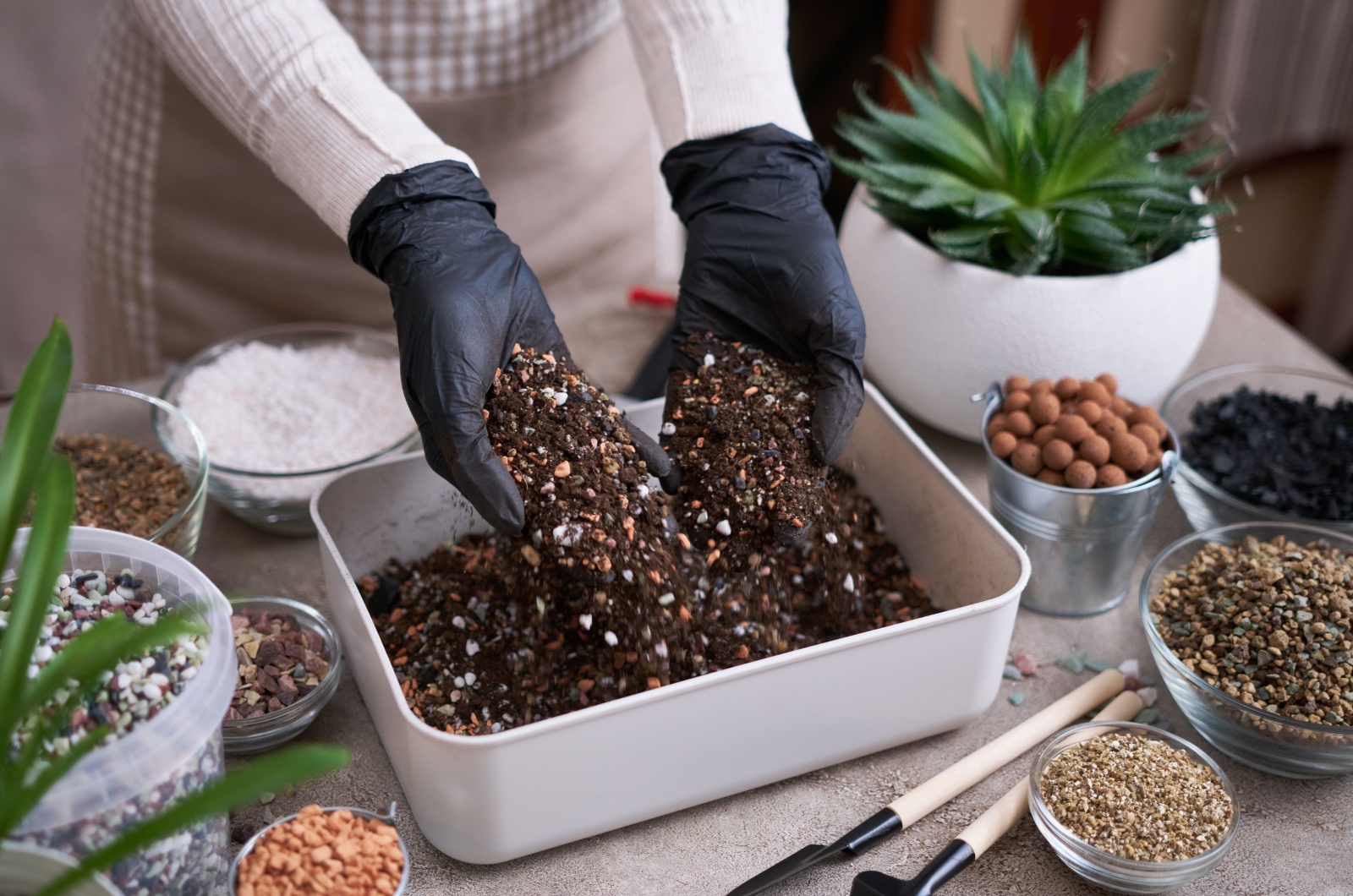And the award for the easiest-to-grow houseplant goes to the snake plant! Ok, it’s not exactly a competition, but I can’t help singing its praises whenever I talk about it.
If you have a snake plant, I’m sure you’ve already figured out that part.
The only way things can go south with this plant is if it’s watered wrong, which leads to poor growth. So, you need to create a schedule that will keep everything running smoothly.
I have to admit that getting the hang of your snake plant’s watering needs might take some time. But no worries, I’m here to fast-track you with the ideal schedule!!
Exactly How Often You Should Water Your Snake Plant?
The snake plant aka Mother-in-law’s tongue is renowned for its amazing tolerance to drought. This is a succulent plant which basically means the plant has the ability to store water in its leaves.
But don’t let this fool you, you’ll still need to water your snake plant regularly to keep it healthy.
A rule of thumb is to water this Dracaena once the top layer of the soil dries out. If you aren’t sure how deep that is, simply measure 1.2 – 1.6 inches from the surface of the soil.
When I was a beginner, I invested in a moisture meter and it was one of the best purchases ever. You’ll get accurate results and learn the basics of determining moisture in the soil.
How long does it take for the snake plant soil to dry out this much? There isn’t a definite answer to it but the general rule is to water every two weeks when the temperatures are warmer during the spring and summer months.
The mother-in-law’s tongue will enter dormancy when winter arrives, so you’ll need to water it less frequently. I water it every three weeks during the winter but it can be even less frequent depending on the soil moisture.
Do not stick to exact days or weeks, but rely on checking the soil moisture before every watering instead.
Here’s The Best Watering Technique For Snake Plants
Another essential thing when it comes to watering all snake plant varieties is the technique. You can use the standard method, which involves pouring water around the plant base until it starts running out through the drainage holes.
Look, there’s nothing wrong with this approach but I’m more for the bottom watering technique. I fill the sink with tepid water and put the pot with my snake plant in it.
I leave it in water for about 30 minutes and then allow it to drain well. This is the best way to avoid water touching the leaves, which is a common snake plant care mistake.
The Type Of Water Also Matters!
While you might be focused on how often to water your snake plant, the type of water you use is just as important.
Not all water is created equal, and the quality can significantly impact your plant’s health. Tap water, for instance, can contain salts, chlorine, and fluoride, which, over time, may build up in the soil and cause damage to your snake plant’s roots.
If you’re using tap water, it’s best to let it sit for a day or two before watering your plant. This helps dissipate chlorine and allows any chemicals to settle.
Alternatively, using distilled or filtered water is an excellent choice for ensuring your plant receives the purest nutrients.
But for best results, choose rainwater! It’s naturally soft and free from chemicals.
One more thing, no matter the type of water, always ensure it’s at room temperature to avoid shocking your plant.
Is Your Snake Plant Thirsty?
It’s easy to think that your snake plant is doing just fine without much attention, but it’s important to pay attention to the subtle signs that it’s thirsty.
The tricky part is that snake plants don’t show their need for water in the typical ways other plants do. If your plant’s leaves are looking a little droopy or slightly limp, it could be a sign that it’s not getting enough water.
The leaves may also develop brown, dry tips, especially as the plant continues to go without water for longer periods. This is your plant’s way of telling you that it’s struggling to stay hydrated.
Another clue that your snake plant might be thirsty is if the lower leaves start to yellow or turn mushy.
While yellowing can be caused by other issues, in the case of underwatering, it often starts from the bottom up.
The key here is to look for a change in the consistency of the leaves – if they feel soft or squishy, that’s a red flag.
Remember, the snake plant is a tough one, but even the toughest plants need a little TLC when their hydration needs aren’t being met.
What To Do If You Underwater Your Snake Plant?
If you’ve noticed that your snake plant has been underwatered for a little too long, don’t worry – there’s still plenty you can do to get it back to its vibrant self.
First things first, stop the cycle of neglect and give it the proper hydration it needs. Snake plants are resilient, so they can recover from underwatering if you take action right away.
Start by thoroughly watering your plant, ensuring the water reaches the roots and helps rehydrate the soil. However, avoid flooding the plant all at once; instead, water it slowly to allow the soil to absorb moisture evenly.
Next, check the soil to make sure it drains properly. Snake plants dislike sitting in waterlogged soil, so good drainage is essential to prevent root rot from setting in.
If your plant’s soil is compacted or non-draining, consider repotting it into fresh, well-draining soil.
As you monitor its recovery, keep an eye on the leaves. It may take a little time, but with patience and proper care, those droopy, dry leaves will gradually perk up.
Here Are The Signs Your Snake Plant Is Receiving Too Much Water
Did you know that snake plants can grow in water only? But this doesn’t mean they’ll tolerate wet feet in the potting soil! One of the first signs that your plant is getting too much water is the appearance of yellowing leaves.
Unlike underwatering, where the leaves may turn brown and dry, overwatering causes the leaves to soften, yellow, and eventually rot. This is a clear indication that the roots are sitting in waterlogged soil, leading to root rot.
Another common sign is the development of mushy or soggy leaves, particularly at the base.
These leaves may feel squishy to the touch, and in severe cases, they might even fall off easily.
If you notice a strong, musty odor around your plant, it’s a red flag that root rot has begun to take hold.
Additionally, if your snake plant seems to be growing slower than usual or has developed brown spots on the leaves, it could be an indication that the excess moisture is hindering its ability to thrive.
Keep an eye out for these warning signs to avoid long-term damage to your plant.
And Here’s What To Do With An Overwatered Snake Plant
It’s not too late to save your plant, but prompt action is crucial. First, you’ll want to remove your plant from its pot to inspect the roots.
If they’re mushy, brown, or black, you’ve likely got root rot on your hands. Trim away any damaged roots with a clean, sharp pair of scissors or pruning shears.
Make sure to cut back to healthy, firm roots to give the plant the best chance of recovery.
Once the roots are properly trimmed, let the plant dry out for a few hours or even a day, allowing any excess moisture to evaporate.
While it’s drying, check the soil to ensure it drains well and isn’t compacted. After the drying period, repot the snake plant in fresh, well-draining soil.
Moving forward, avoid overwatering by sticking to a strict watering schedule and allowing the soil to dry out completely between waterings.
Your snake plant will be on its way to a healthy recovery with a little patience and care.
Remember That Watering Depends On Many Factors!
Look, there’s no one-size-fits-all rule. While it’s easy to rely on a fixed schedule, the truth is that watering depends on several factors that can vary from one plant to another.
For instance, the amount of light your snake plant receives plays a huge role in how often it needs water.
If it’s placed in a bright spot with plenty of bright indirect light, it will likely dry out faster and require more frequent watering. On the other hand, if your plant is in a low-light area, it may stay hydrated longer and need less water.
Temperature is another key factor. During warmer months, when the plant is actively growing, it will generally need more water.
But during cooler seasons, its growth slows down, and it’s best to water less often.
The size of your pot, the type of soil, and even the humidity levels in your home can also affect how quickly the soil dries out.
All of these elements combined will help determine the right watering schedule for your unique plant. So, take note of these factors, and adjust accordingly to keep your snake plant thriving!
Bonus Tip: Make Your Own Soil And Prevent Watering Issues!
You know how I prevented all watering issues in my snake plant? I made my own potting mix! The standard potting soil you can purchase in all garden centers is not a good option for succulents.
Snake plants thrive in well-draining soil, and creating a custom mix allows you to control the moisture levels and ensure your plant gets exactly what it needs.
The standard homemade mix includes 2 parts potting soil, 1 part perlite and 1 part sand (or orchid bark for added texture).
But my secret combo is mixing 3 parts potting soil, 2 parts perlite and 1 part pumice or coarse sand. I also add a handful of charcoal for added drainage and odor control!
All these ingredients promote airflow around the roots and prevent water from pooling, which helps avoid root rot and encourages healthy growth!
And there you have it! With these simple tips and tricks, you’ll give your snake plant just the right amount of water, and in return, it’ll reward you with lush leaves. Who knows, you might even hit the jackpot and see a few flowers!

